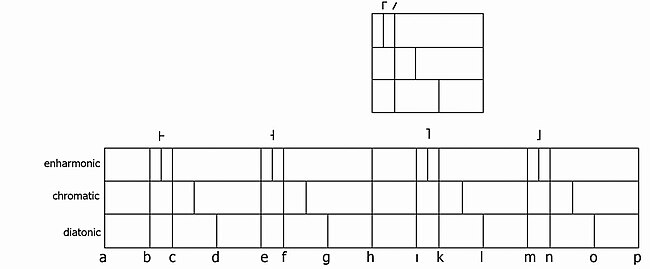Antiphonary of St. Benigne
In 1001 he followed a request by Duke Richard II and became first abbot at the Abbey of Fécamp which was a reforming centre of monasticism in Normandy.
The few things known about him can be read in a hagiographic source, the Vita domni Willelmi in fourteen chapters written by his disciple, the Burgundian monk Raoul Glaber in 1031, and revised probably by demand of the later Abbot John of Fécamp during the late 11th century.
[1] William was born as son of the Alemannic Duke Robert of Volpiano at the citadel of his family on the San Giulio Island of the Lake Orta in Piedmont.
His plan failed after the catastrophic defeat of his son Otto II near Crotone, but the role of Cluny as a centre for liturgical reforms had increased in Ottonic times.
William's reforms were not only concerned with liturgy and the new design of local chant books, but also with the construction of new churches and buildings for abandoned abbeys, with canon law, with the organization of grammar schools and even rural communities of Normandy.
There are some testimonies like the Libellus de revelatione, edificatione et auctoritate Fiscannensis monasterii, a chronicle of Fécamp, which reports certain resentments against Norman culture and its local liturgical customs.
According to Véronique Gazeau he did not spend too much time in Normandy during the period about 30 years of his Norman activities, but nevertheless his school could be established, because he ordained his students as abbots.
By order of Duke Robert he left Fécamp for John of Ravenna in 1028, before 1027 he was assisted at the Abbey at Bernay by a custos Thierry, an elder and experienced monk and prior from Saint-Bénigne of Dijon.
Its point of reference was the Boethian diagram, which displayed the double octave of the systema teleion in the diatonic (semitonium-tonus-tonus), the chromatic (semitonium-semitonium-trihemitonium), and the enharmonic tetrachord (diesis-diesis-ditonus).
The different positions were represented by alphabetical letters, except the dieses which had special signs not unlike the tyronic letters used by Boethius: This alphabetic pitch notation not only offers insights into microtonal shifts used by the cantors of this local school, it proves that the common projection of the piano keyboard on the medieval tone system is inadequate.
[7] Guido's explanation, how to find this interval at the monochord, made it already evident that the diesis, taken from the "enharmonic" division of the tetrachord, was used here as a microtonal shift in different melodic modes of the diatonic genus.
As an example might serve the Introitus "Repleatur os meum" used as a refrain for Psalm 70 during the procession into the church, at the beginning of the morning Mass on Saturday before Pentecost.
Among the monastic reforms of Normandy William of Volpiano was an important protagonist among the local abbots, but his alphabetic notation was only used over the following centuries in the Norman monasteries of his school, but never in the later Italo-Norman manuscripts which were rather influenced by the Aquitanian school (a few manuscripts used central French neumes, but without alphabetic notation).
Within the Cluniac Monastic Association, the cantors of the following generation like Adémar de Chabannes who was taught by his uncle Roger at Saint-Martial Abbey of Limoges (Aquitaine), developed a new diastematic neume notation which allowed to indicate the ligatures, even if they were separated by the vertical disposition according to their pitch class.
His innovation was imitated by Italian cantors, first in Northern Italy than in other reform centres of the 11th century like Benevento and Monte Cassino.


